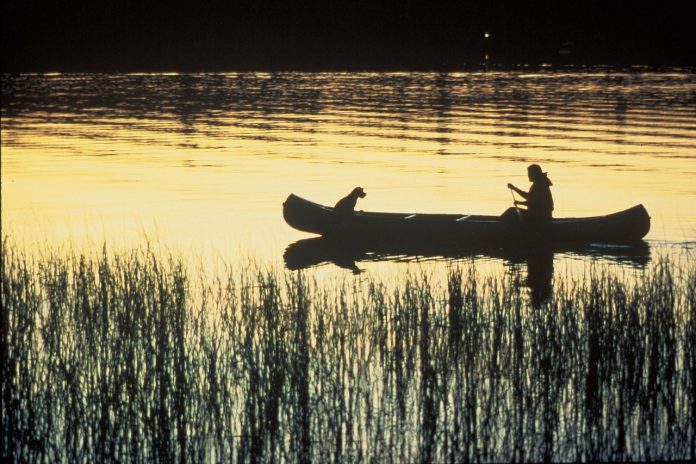Sultry summer days practically beg to be enjoyed near the shady edge of a lake.
The shade keeps it cool and makes it possible to enjoy birds, dragonflies, butterflies, and fish.
One organism that’s noticeable in July is a mysterious floating mass of jelly. It looks like a football-sized blob.
Blob
It’s usually attached to a log or stump in a shallow area, and it seems to have a textured fuzzy coating.
The first time I encountered one of these gelatinous masses many years ago I was perplexed.
It reminded me of nothing I had ever seen in an invertebrate zoology class. So it was back to the books.
First, though, I had to get a better look. I used a paddle to hoist it into the canoe. It seemed to be simply a gelatinous mass.
The exterior was covered in what appeared to be irregularly shaped textured plates. It was just slightly rough to the touch.
When I sliced it open, the interior was indeed pure jelly. If this thing was alive, it had to be the exterior covering.
Zoids
Back in my office, I scoured textbooks and field guides until I finally recognized the mysterious creature. It was a bryozoan, a member of an obscure group of invertebrates.
Its scientific name is Pectinatella magnifica. It turns out these gelatinous masses are colonies of thousands of individuals called zoids.
Each of the textured plates I had originally noticed consisted of several zoids. Under a powerful hand lens, each zoid resembled a flower.
The “petals” were actually tiny tentacles that capture organic food particles suspended in the water.
It was the tentacles that gave the blob its fuzzy underwater appearance, and each zoid helped clear the water of organic debris.
The blob itself was a gelatinous mass produced by the zoids so they would have something to which to attach themselves. The jelly is more than 99 percent water.
Reproducing
By late summer, the zoids produce statoblasts, tiny burr-like offspring analogous to plant seeds.
The statoblasts stick to the fur of mammals such as muskrats and mink and to the feathers of ducks and other waterfowl. That’s how Pectinatella gets dispersed to other bodies of water, both near and far.
Pectinatella cannot survive winter temperatures, so it overwinters in the statoblast stage, which remains dormant until spring. Then they “germinate” into individual zoids.
The zoids then grow and reproduce rapidly until by midsummer, new gelatinous masses can be found attached to stumps and floating logs.
Harmless
Pectinatella’s ecological value is unclear. The larvae of some midges live inside the masses, but I know of nothing that eats it. And it’s harmless to people.
So it’s mostly an ecological oddity that few people know or care about.
Fish line warning
While on the water this summer, watch for tangles of used fishing line. Though most anglers are serious conservationists, some are slobs.
Balls of discarded fishing line left on stream banks or in the water gives them away. They are the scumbags of the waterways.
The problem is that aquatic creatures such as turtles, snakes, and frogs can become entangled in old fishing line and die.
More importantly, birds collect the line and use it as nesting material. Invariably tragedy ensues.
Nestlings get entangled and suffocate or starve before they can leave the nest. Every year I see young cliff swallows dangling from nests built on bridges.
Clean up
The solution to this problem is simple. Anglers should always dispose of discarded fishing line responsibly.
Never leave it in the water or onshore. Just stuff it into your pocket until you find a recycling bin or trashcan.
No angler wants to hurt nesting birds or other wildlife. They simply don’t understand the risks that discarded fishing line presents.
A little education and peer pressure can help ease the problem. And when you see used fishing line along the shore, pick it up and dispose of it properly, even if you didn’t discard it.
If nothing else, it sets a good example for anyone who might be watching.













